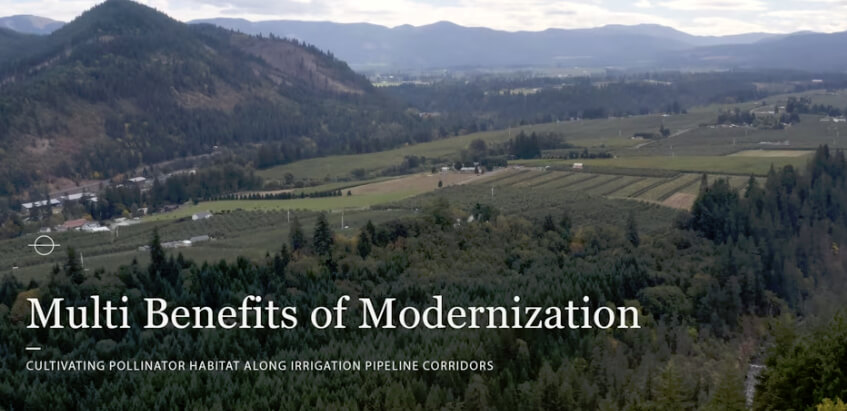One of the biggest challenges to bee health is the loss, fragmentation, and alteration of their habitat. Irrigation modernization can create more pollinator habitat.


“There’s 800 miles in Oregon alone of this similar infrastructure, so it’s a really great opportunity to create more pollinator habitat ”
– Dr. Andony Melathopoulos, Oregon State University
Farmers Irrigation District
This project is the first of its kind to use irrigation district pipeline corridors for native pollinator habitat establishment or rehabilitation. In the western United States, irrigation infrastructure modernization provides a unique opportunity to explore and implement cost-effective pollinator conservation efforts. With over 50 miles of canals already converted to pipelines across Oregon in the past 5 years and over 1,000 miles worth of projects already identified, the opportunity for increased, diverse pollinator habitat is immense. By replacing invasive weeds along irrigation pipeline with native flowering plants, new pollinator pathways can be established to support increased bee diversity.
The Hood River Soil and Water Conservation District has been working
with Farmers Irrigation District to implement pollinator corridors along piped sections of district infrastructure. The Farmers Irrigation District encompasses approximately 12,000 acres located in northern-central Oregon within the Hood River Basin.

“The conservation of water and creation of these pipelines opens up an opportunity for putting pollinator habitat back into the landscape. We’re very excited and see a lot of potential for this to expand into other regions.”
– Dr. Andony Melathopoulos, Oregon State University
This project was supported with funds from NRCS and in partnership with Farmers Irrigation District, Farmers Conservation Alliance, OSU Extension, Hood River Soil & Water Conservation District, and the Hood River Watershed Group.
Hood River Watershed Group